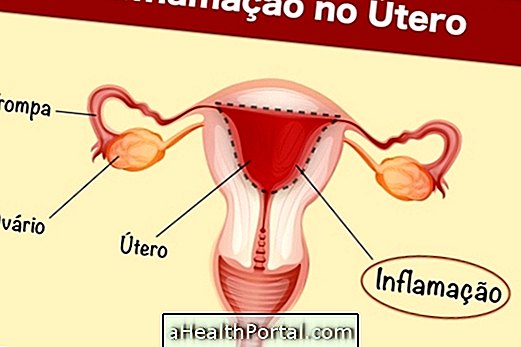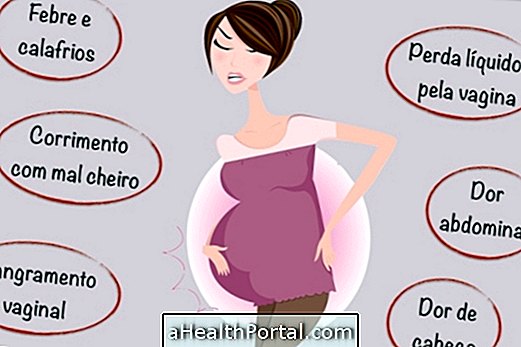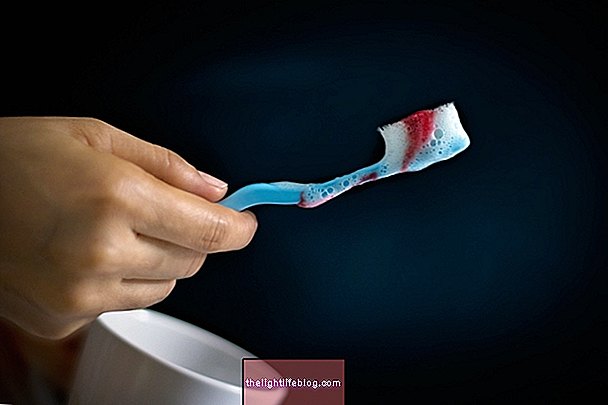Chronic cervicitis is a constant irritation of the cervix, which mainly affects women of childbearing age. This disease causes pain in the uterus, swelling and redness in the vagina, and there may be yellowish or greenish discharge when it is being caused by an STD.
Usually cervicitis is caused by an allergy to some product of intimate use or by diseases, such as chlamydia, gonorrhea or HPV, for example. In this way, cervicitis can be contagious if the disease is being caused by an STD and if the woman has intimate contact with the partner without a condom. Find out what the main symptoms of STD are in women.
Cervicitis is cured when it is possible to completely eliminate what is causing the disease. So one should go to the gynecologist to find out if it is any allergy or if there is any virus or bacteria involved to start the proper treatment.

Symptoms of chronic cervicitis
Chronic cervicitis does not always present symptoms, but when they are present, they can be:
- Swelling and redness in the vagina;
- Itching in the genital region;
- Pain in the womb, at the foot of the belly;
- Frequent urine;
- Pain during intercourse;
- Feeling of weight or pressure in the pelvic region;
- Yellowish or greenish discharge when there is some bacteria involved.
In most cases, chronic cervicitis does not cause symptoms, so it is important that all women perform at least 1 gynecological consultation per year to check for any changes that require treatment.
The gynecologist can get to the diagnosis of this disease by observing every intimate region with the vaginal speculum and the result of exams such as vaginal smear, pap smear or biopsy, for example. See which are the 7 main exams requested by the gynecologist.
Treatment to cure chronic cervicitis
Treatment for chronic cervicitis can be done with the use of antibiotics to take and antibiotic ointments to apply inside the vagina, such as Novaderm or Donnagel, which reduce uterine infection when the cause is bacteria. Antiviral medications can be used in case of virus infection. Learn more about cervicitis treatment.
During the treatment it is recommended that the woman maintain good hygiene in the intimate region, washing daily only the external region and changing the panties every day. Until the end of the treatment should not have sexual intercourse, so that the tissues can heal. When the disease is caused by an STD, the partner should also be treated to prevent the disease from recurring after treatment if the partner has an STD, for example.
When drug treatment can not cure the disease, the gynecologist may also indicate a laser or cryotherapy surgery to remove the part of the tissue that is infected. Usually the surgery is done in an outpatient setting under local anesthesia and the woman returns home the same day, without any pain or complications.

Is chronic cervicitis HPV?
Chronic cervicitis can be caused by the HPV virus but is not always, and can be caused by other situations, such as allergies or other viruses or bacteria. Find out what the symptoms are, transmission and how the treatment is done for HPV.
Main causes
Chronic cervicitis can have non-infectious causes, such as an allergic reaction to the IUD, diaphragm, condom, spermicide, intimate gel, internal absorbent, for example. It can also happen in women who use vaginal showers frequently, since this eliminates the good bacteria from this place, favoring the growth of more bacteria.
Chronic inflammation of the cervix can also be caused by the presence of bacteria such as Staphylococcus , Streptococcus , E coli, Neisseria gonorrhoeae, Chlamydia , Trichomona vaginalis, Herpes simplex virus and diseases such as Naboth's cyst, which is a small a lump that forms on the surface of the cervix. Here's how to identify and treat Naboth's cyst.
Women who are most at risk of developing chronic cervicitis are those who are at the end of pregnancy; who have had children or are older. In addition, women who have had some type of STD and those who maintain intimate contact without condoms with several partners, are the ones who are most at risk of developing this disease.
Possible Complications
When the chronic inflammation of the cervix is not cured, complications can arise due to the permanence of this alteration in the uterus, and there may be:
- Propagation of infection by the uterus, bladder, endometrium, ovaries and fallopian tube leading to pelvic inflammatory disease (PID);
- Pelvic inflammatory disease can lead to infertility and ectopic pregnancy;
- Increased risk of contamination with the HIV virus;
- Pregnant women are at risk for miscarriage and premature birth if cervicitis is not treated;
- Stay or return of infection even after treatment.
Anyone who has had an episode of cervicitis can avoid a new picture, taking care not to use the vaginal shower, having intercourse with the same partner and always with a condom, not inserting anything in the vagina, avoiding the use of an absorbent, peeing afterwards sex, pap smear once a year and always go to the gynecologist as soon as symptoms appear such as pelvic pain, pain when urinating, pain during intercourse or any type of discharge.

























